Hotel Urmey in Downtown Miami
This is the story of a hotel that stood at the corner of SE Second Avenue and SE First Street in downtown Miami for more than 85-years. The inn opened on January 4, 1917.
Hotel Urmey had a good run. It was built by a Miami pioneer in 1917. William Urmey managed one of the early Miami establishments before building his dream hostelry. His vision was to build an elegant building that would replace Flagler’s Royal Palm Hotel as the top destination in Miami.
Urmey ran his business with the highest standards until his death in 1950. Several years later, Ed Claughton fulfilled a wedding night promise to his wife to buy the hotel. The Claughtons owned the Urmey for more than twenty five years before selling to a group that converted the building to commercial office space.
By the time there was a renaissance in downtown Miami, the Urmey was outdated and run down. It was razed to make room for new development in 2005. The hotel was built with a pioneer spirit and served downtown Miami proudly for many years.
William N. Urmey
William Urmey was born on September 27, 1872 in Harrodsburg, Indiana. He grew up and was educated in Danville, Indiana. In 1907, William decided to head south to pursue a new opportunity in Florida. He operated the Escambia Hotel in Pensacola to learn how to run a hotel. It was his first job as a hotel manager.
During his time in Pensacola, William married Maude Deckard of Bedford, Indiana. The couple got married on May 21, 1908. They remained in Pensacola until a new opportunity presented itself to move to Miami in 1911.
When the couple arrived in South Florida, William signed a lease to operate Hotel San Carlos in downtown Miami. He operated the San Carlos for five years and sharpened his skills as a hotel operator. By 1916, William Urmey was ready for a bigger project.
Urmey Buys Land for a Hotel
By the mid-1910s, Miami was growing very fast. The in-migration of new people exceeded the available accommodations. William Urmey seized the opportunity to find the ideal lot to build his namesake hotel.
He didn’t have to travel far from his current hotel to find the ideal location. Hotel San Carlos was located at today’s 39 NE Second Avenue. It was located directly east of the Halcyon Hotel and just north of Dr. James Jackson’s surgical office. The Jackson office was moved to the Brickell neighborhood in 1916 and is now the office of Dade Heritage Trust.
William convinced Lewis Quentin Jones to sell him his property and residence. Jones was living at the northwest corner of today’s SE Second Avenue and SE First Street. The property was diagonally across from the northwest edge of Royal Palm Park.
Urmey was able to sell the residence to Charles E. Oxar, who promptly moved the home to property he owned at today’s NE First Avenue. It was somewhat common to recycle existing buildings by moving them to new locations in the early twentieth century.
Prior to clearing the land to build his hotel, William agreed to let James Deering relocate a number of trees on the lot. During the construction of many of the new buildings in the mid-1910s, Deering invested the time and money to transplant trees to his property.
Deering was concerned about saving the rare trees found in the area. On May 11, 1916, he transplanted a sapodilla tree and several wild figs from the Urmey property to Vizcaya. He also transplanted a big wild fig tree from the site of the McAlister Hotel construction site to his property.
Construction and Opening of Hotel Urmey in 1917

William Urmey’s namesake hotel was designed to be a six story structure. By mid-summer, the land was cleared. On June 3, 1916, the foundation for the hotel was poured. The hotel was built using modern techniques and materials. It was a poured concrete structure.
William made sure that all advertisements accentuated that the hotel was sturdy and fire proof. It is no doubt that he was making the point that his hotel was safe in comparison to the older Royal Palm Hotel.
The hotel was designed to attract the affluent Miami visitor. The equipment and furnishings were lavish. In addition to marketing the great location, Urmey made sure that visitors knew that his hotel was upscale and modern.
The building also featured a wrap-around veranda on the second floor. Given that there was no air conditioning in the first half of the twentieth century, the Urmey Hotel provided rows of rocking chairs so that hotel guests can enjoy the nice breeze off the bay. The veranda was elevated one story above the street, so the breezes were unobstructed at the Urmey.
The hotel officially opened on January 4, 1917. The opening was just in time for the 1917 tourist season. Construction only took six months from the foundation pour to the opening.
Hotel Urmey immediately began to take business away from Miami’s first luxury hotel. Competition from new and modern hotels was the first of a sequence of events that would lead to the end of the Royal Palm Hotel in 1928.
Expansion in 1919
At the conclusion of the winter season in 1919, William Urmey announced that the hotel would undergo alterations. Hotel Urmey closed every summer. The summer months of 1919 provided the opportunity to expand and augment the hotel.
William added two additional floors to bring the height of the hotel to eight stories. He also doubled the size of the dining room which provided a seating capacity of 350 persons. The hotel became a prime destination for convention business in Miami and needed more rooms and a bigger banquet area. The expanded hotel and dining room could accommodate the growing convention business in Miami.
Events at Hotel Urmey
From the very beginning, Hotel Urmey became a destination for conventions, groups and social events. The Elks Lodge would have frequent conventions in Miami and their preferred hotel was the Urmey. Women’s groups and local fraternal organizations would hold meetings and gatherings in the Urmey dining room.
During the 1920s, the Urmey would feature “tea dances” at the hotel. Given that Miami had been “officially” dry since 1913, the term “tea dance” may have covertly conveyed that the beverages were probably something stronger than a standard tea.
On December 6, 1947, Marjorie Stoneman Douglas was honored by the Miami Bookfellows at Hotel Urmey. She had just published her book “The River of Grass”. Florida’s Governor Millard Caldwell attended the event.
In April of 1950, George Smathers was seen relaxing at the Urmey during his campaign for US Senator. The 1950 senatorial campaign was hard fought and Smathers took time off the campaign trail to regroup with his team at the hotel. Smathers defeated Claude Pepper for the democratic nomination.
(W)Urmey during World War II
During World War II, Miami and Miami Beach were taken over by different branches of the military. The Navy took control of many of the hotels and office buildings for the war effort. However, the Urmey remained privately run during the war years.
Typically, Hotel Urmey would close in May for the summer season. However, beginning in 1943, the hotel remained open during the summer to provide overflow accommodations for the military.
To local Miami residents, World War II was a time when foot traffic in downtown Miami was saturated with men and women in uniform. The Urmey’s restaurant and terrace were very popular with the service men and women. It was so popular, locals began to refer to Hotel Urmey as “the Wurmey”. The nickname may have possibly been a reference to Wartime Urmey.
The Claughtons Buy Hotel Urmey in 1954
It was an event in the latter part of 1950 that led to the hotel’s first change of ownership. Seventy Five year old William Urmey left Miami to visit Danville, Indiana on Saturday, September 2nd. He was traveling alone by train.
During his trip, William had gotten ill. He stopped in Louisville, Kentucky to get rest. His wife left on Tuesday, September 5th, to join him. However, by the time Maude Urmey had arrived, William died of a heart attack.
After thirty three years of one owner, Hotel Urmey was now without its founder. It would take several years, but the hotel got a new owner when Edward Claughton bought the hotel from the Urmey estate on June 24, 1954.
Ed and Lillian Claughton partly had a nostalgic reason for buying Hotel Urmey. Shortly after graduating from Miami High School, Lillian Corbett met and married Edward Claughton in 1925. The couple had their rehearsal dinner and wedding reception at Hotel Urmey.
During the reception, Lillian said to her new husband “I just love this hotel”, and his response was “someday I will buy it for you”. Roughly thirty years later, Ed made good on his promise.
The Claughtons bought the Urmey for $850,000 with the hopes of also buying the adjoining property to the west of the hotel on SE First Street. Their hope was to either expand or replace the original building.
One of the immediate changes to the hotel was that Lillian Claughton enclosed the wrap-around veranda. The rocking chairs were moved to guest rooms and tables were set on the renovated second level. It became a very popular lunch spot. Presumably, the hotel had air conditioning at the time of the enclosure project.
Demolition Plans in 1965
Ten years after purchasing the hotel, the Claughtons made plans to raze the 1917 structure and replace it with a sleek, eleven story motel. The plan called to replace the original building’s arcade with cantilevered construction which would have extended the motel over the sidewalk.
However, a new zoning ordinance in 1961 required a “base building line”, which in turn set the zone width of streets. The purpose of the ordinance was to allow the city to widen streets to accommodate additional traffic when needed.
Ed Claughton Jr. and his attorney, Charles H. Gautier, made the claim that the ordinance did not apply to the Urmey Hotel based on the original deed that permitted an easement over the sidewalk. The city disagreed.
The legal battle led to a delay in the issuance of a building permit. By the time the city and the Claughtons reached an agreement, eighteen months had passed and the Claughtons lost their motel franchise agreement.
The forty nine year old hotel got a reprieve from demolition. The Claughtons continued to directly operate the Urmey for ten more years. In 1975, the Claughtons leased the hotel to Venezuelan Jocobo Miguel. Miguel took over hotel operations.
By the summer of 1979, Hotel Urmey was cited for multiple code violations. One long time hotel resident was quoted in the Miami Herald stating “it’s a good location if you don’t mind the roaches”. The carpet was mildewed and the colored photographs in the lobby were yellowed.
The lease required Miguel to handle the maintenance of the hotel. When the violations were revealed, Ed Claughton Jr. had to get involved and file for an extension to address the issues. The nuisance of having deal with the numerous maintenance issues, as well as needing cash for another project, led to the Claughtons accepting an offer to sell Hotel Urmey in August of 1979.
Claughtons Sell the Hotel
By the end of the 1970s, the priority for the Claughton family was to develop the remaining portion of Claughton Island that they still owned. The family sold part of the island to a joint venture in 1975, which was later developed by Swire Properties.
In order to focus their resources on Claughton Island development, the family decided to sell Hotel Urmey. The hotel and property were sold to a group led by Venezuelan investor Carlos Lindenfeld. The group paid $1.75 million for the seven story hotel.
Prior to closing on the sale, Suzie Claughton gathered some of the old furniture from the hotel. She rounded up several of the original rocking chairs, as well as, the Urmey family bedroom furniture. Suzie gave the furniture to each of her children as keepsakes from the heyday of the old hotel.
The group briefly closed the hotel and renovated it for a different purpose. The group was optimistic that downtown Miami was due for revitalization. They were equally optimistic that their plans for the old hotel would be a part of urban renewal.
The hotel was converted into a modern office building with shops that catered to downtown’s foreign tourist trade. An influx of foreign investment and tourism contributed to the optimism for downtown Miami in the late 1970s and early 1980s.
Centro Lofts Replace Urmey Building
The Urmey operated as an office building for the next twenty years. Despite surviving at the corner of SE First Street and SE Second Avenue for eighty eight years, the condominium boom of the mid-2000s led to the end of the Urmey.
Jorge Perez’s Related Group had plans to build the Lofts IV condominium building on the site. The Urmey was razed in 2005 to make room for the Related Group project. However, following the real estate downturn in 2008, the project was cancelled.
In December of 2013, a partnership of Newgard Development Group and the Tilia Family of Cos, broke ground on a project called “Centro Lofts”. The project was a $90 million, 37-story, 352 residential condominium tower.
Centro Lofts is one of several towers in downtown Miami that are not required to provide onsite parking for their residents. The assumption is that residents will walk or use public transportation to get around. Construction was completed and it officially opened earlier this year.
Remembrance of Hotel Urmey

While Hotel Urmey became the old building behind the Olympia that fell into disrepair, it was once held in high regard as one of the nicest hotels in downtown Miami. It represented the new wave of hotels in the 1910s and was partly responsible for the obsolescence of Flagler’s Royal Palm Hotel. Hotel Urmey was sleek, modern and flashy through the first half of the twentieth century.
It was the center of entertainment and provided an escape from reality during the war years. A lot Miami residents and tourists of yesteryear had fond memories of attending events and staying at Hotel Urmey. It was one of the most popular destination for conventions, weddings and social gatherings.
However, time has a way of changing perception. As people migrated out of the downtown core in the 1960s and 1970s, the once elegant hotel lost its luster. By the time the latest era of urban renewal began in downtown Miami, Hotel Urmey’s time had passed.
At one time, the hotel stood tall as part of Miami’s skyline. More importantly, it stood proudly representing the spirit of its owners. William Urmey was a pioneer hotel operator. He had a vision and a pioneer passion that helped him execute on his vision.
Hotel Urmey had two owners from 1917 – 1979. Like the William Urmey before them, the Claughtons had a special memory which led them to purchase the hotel in the mid-1950s. Both families had a special bond with the building and the business.
There are times when a building represents more than just an investment. For William Urmey and the Claughtons, Hotel Urmey was just that kind of place.
Images:
Cover: View from the second floor porch of Hotel Urmey in 1934. Courtesy of Miami-Dade Public Library. Image part of the Romer collection.
Figure 1: William Urmey in Coral Gables in 1920. He is third from the left. Courtesy of Florida State Archives.
Figure 2: Portrait of James Deering. Courtesy of Vizcaya Museum.
Figure 3: Aerial view with Hotel Urmey in the foreground and the Royal Palm Hotel in the background in 1918. Courtesy of Florida State Archives.
Figure 4: Shriners at Hotel Urmey in 1922. Courtesy of Florida State Archives.
Figure 5: Navy Seaman marching on Biscayne Blvd in 1942. Courtesy of Florida State Archives.
Figure 6: Hotel Urmey. Date unknown. Courtesy of Casey M. Piket.
Figure 7: Headline in Miami Herald on October 19, 1965. Courtesy of Miami Herald.
Figure 8: Hotel Urmey in 1980. Courtesy of Casey M. Piket.
Figure 9: Artist rendition of Centro Lofts in 2013. Courtesy of Centro Lofts.
Figure 10: Hotel Urmey on SE Second Avenue, at the end of the block in this photo, in 1919. Courtesy of Florida State Archives, photographer: William Fishbaugh.




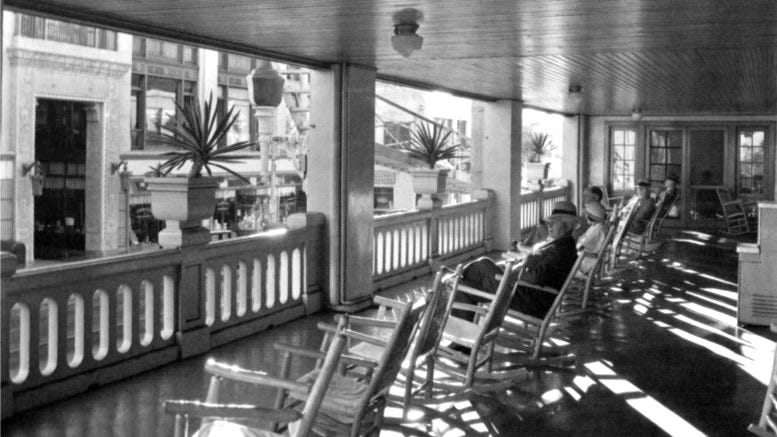
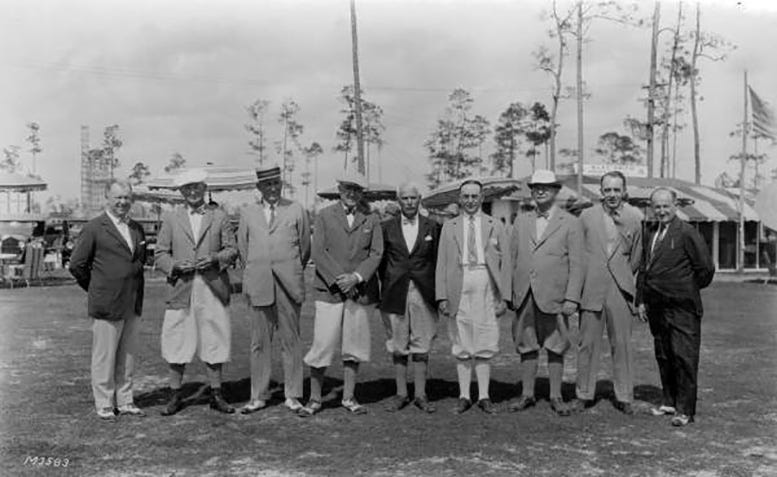
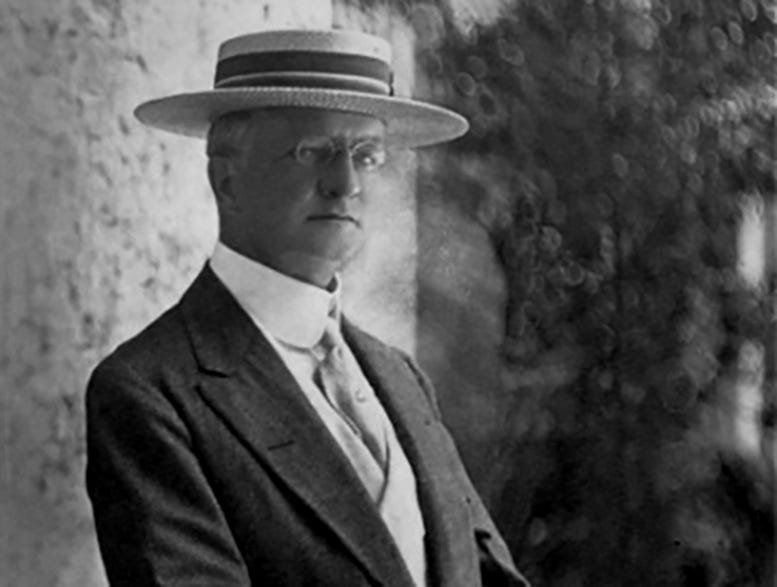

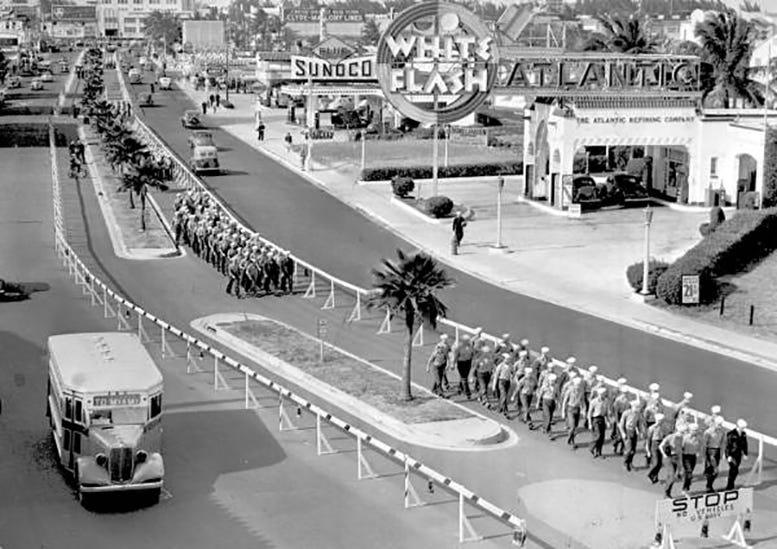
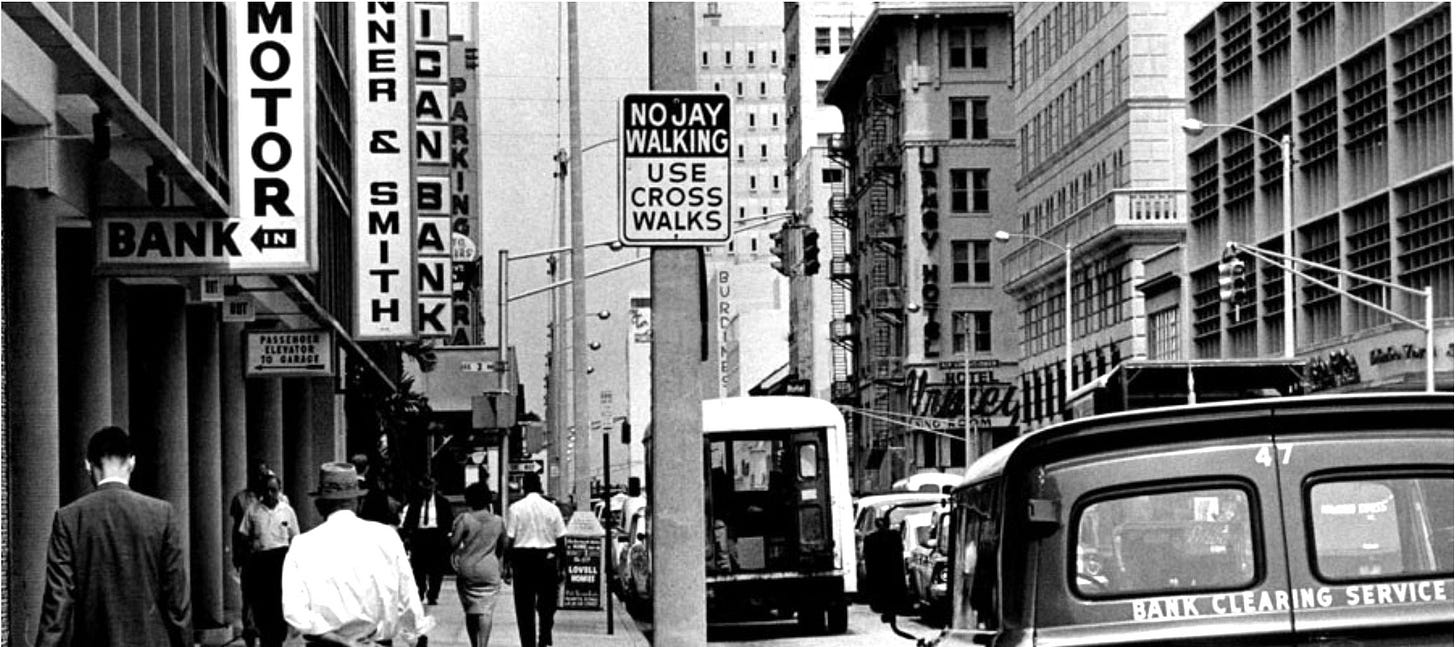


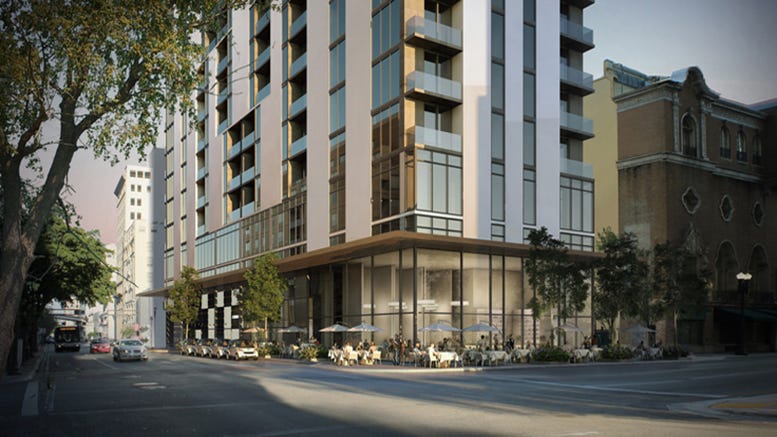
Fascinating story about The Urmey Hotel, Casey. As a kid riding with my bus driving Dad during the '50's I have a few memories seeing that building. Tahnk You for the history.
Brilliant.I would pay $100 to do a 2 hour walking tour of downtown miami with you.Thank you. Jon marrone
Marrone johnt@gmail.com
732 2814791.I live in the Floh building in downtown Miami.After working 15 years in Africa, returned to US and bought my new phone in Newark.Please what books can you recommend? Thank you.